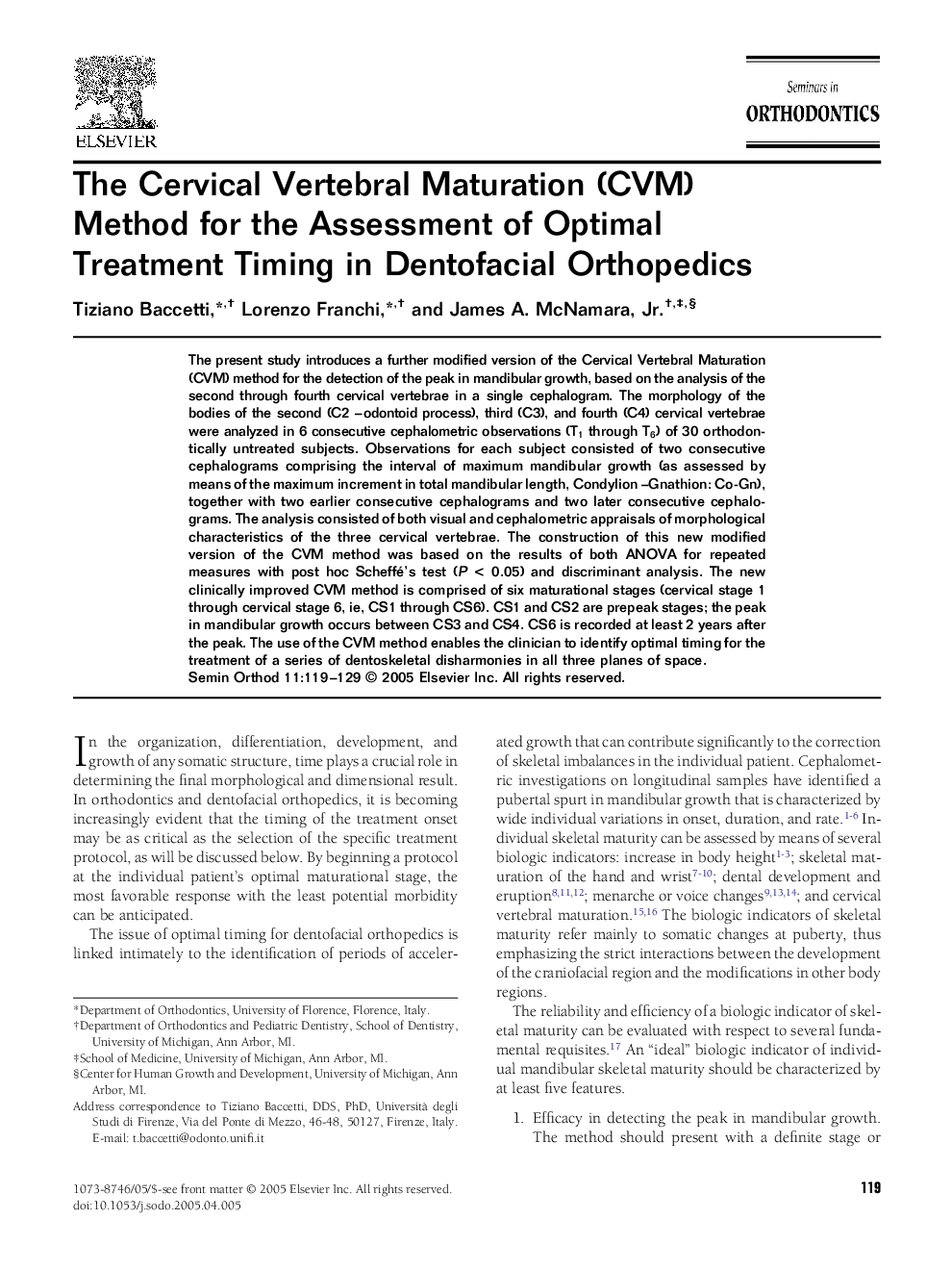| Article ID | Journal | Published Year | Pages | File Type |
|---|---|---|---|---|
| 9220381 | Seminars in Orthodontics | 2005 | 11 Pages |
Abstract
The present study introduces a further modified version of the Cervical Vertebral Maturation (CVM) method for the detection of the peak in mandibular growth, based on the analysis of the second through fourth cervical vertebrae in a single cephalogram. The morphology of the bodies of the second (C2 -odontoid process), third (C3), and fourth (C4) cervical vertebrae were analyzed in 6 consecutive cephalometric observations (T1 through T6) of 30 orthodontically untreated subjects. Observations for each subject consisted of two consecutive cephalograms comprising the interval of maximum mandibular growth (as assessed by means of the maximum increment in total mandibular length, Condylion -Gnathion: Co-Gn), together with two earlier consecutive cephalograms and two later consecutive cephalograms. The analysis consisted of both visual and cephalometric appraisals of morphological characteristics of the three cervical vertebrae. The construction of this new modified version of the CVM method was based on the results of both ANOVA for repeated measures with post hoc Scheffé's test (P < 0.05) and discriminant analysis. The new clinically improved CVM method is comprised of six maturational stages (cervical stage 1 through cervical stage 6, ie, CS1 through CS6). CS1 and CS2 are prepeak stages; the peak in mandibular growth occurs between CS3 and CS4. CS6 is recorded at least 2 years after the peak. The use of the CVM method enables the clinician to identify optimal timing for the treatment of a series of dentoskeletal disharmonies in all three planes of space.
Related Topics
Health Sciences
Medicine and Dentistry
Dentistry, Oral Surgery and Medicine
Authors
Tiziano Baccetti, Lorenzo Franchi, James A. Jr.,
